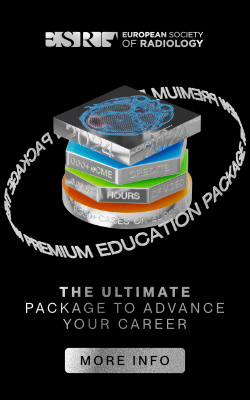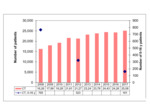Background/introduction
Results from the Nordic-Baltic Paediatric Computed Tompgraphy (CT) dose survey (2011) suggested the potential of optimizing paediatric CT usage in Tartu University Hospital [1]. A subsequent review of practice in our hospital revealed that the indications for CT studies in children were different compared to Nordic countries, the radiation doses were higher and paediatric protocols were not regularly used.
Our study aimed to evaluate the effectiveness of dose optimization efforts in Tartu University Hospital comparing the use and doses of paediatric CT in the years...
Description of activity and work performed
Interventions made to lower the doses and reduce the number of unnecessary paediatric CT investigations:
Awareness and education:
Discussions in the radiology department, educational lectures in the radiology department for radiographers and radiologists.
Educational lectures in different referring departments.
Educational lectures at the national meetings of different organizations (Estonian Society of Radiology, Estonian Society of Radiographers).
Refresher courses for physicians and radiographers.
Lectures for medical students and residents about the optimal use of CT for children.
Technological updates:
The older CT machines were replaced by...
Conclusion and recommendations
Our results illustrate the need to continuously monitor the usage of CT and evaluate doses to prevent excess radiation for the paediatric population. Radiologists should have a leading role in guiding the diagnostic management of young patients and in sharing the education about optimal use of imaging. However, the hole team: referring physician, radiographer, radiologist and physicists must be involved in the constant work of radiation protection in children.
Establishing DRLs is a recognized tool for monitoring patient dose safety level and to assess the...
Personal/organisational information
Kristiina Langemets - Department of Radiology, Tartu University Hospital, Estonia;
Pilvi Ilves - Department of Radiology, Tartu University Hospital; University of Tartu, Estonia;
Pille Kool -University of Tartu, Estonia;
Merit Rajas - Department ofRadiology, Tartu University Hospital, Estonia;
Liis Kärgenberg-Department ofRadiology, Tartu University Hospital, Estonia;
Anni Borkvel -University of Tartu, Estonia;
Kalle Kepler -University of Tartu, Estonia;
Andrus Aavik -Department ofRadiology, Tartu University Hospital, Estonia;
References
Järvinen H, Merimaa K, Seuri R, Tyrväinen E, Perhomaa M, Savikurki-Heikkilä P, Svedström E, Ziliukas J, Lintrop M. Patient doses in paediatric CT: Feasibility of setting diagnostic reference levels. Radiat Prot Dosimetry. 2011;147(1-2):142-146.
Vassileva J, Rehani M, Kostova-Lefterova D, Al-Naemi H, Suwaidi Al, Arandjic D, Bashier E, Kodlulovich Renha S, El-Nachef L, Aguilar J, Gershan V, Gershkevitsh E, Gruppetta E, Hustuc A, Jauhari A. A study to establish international diagnostic reference levels for paediatric computed tomography. Radiat Prot Dosimetry. 2015;165(1-4):70-80.
Damilakis J, Järvinen H et...





